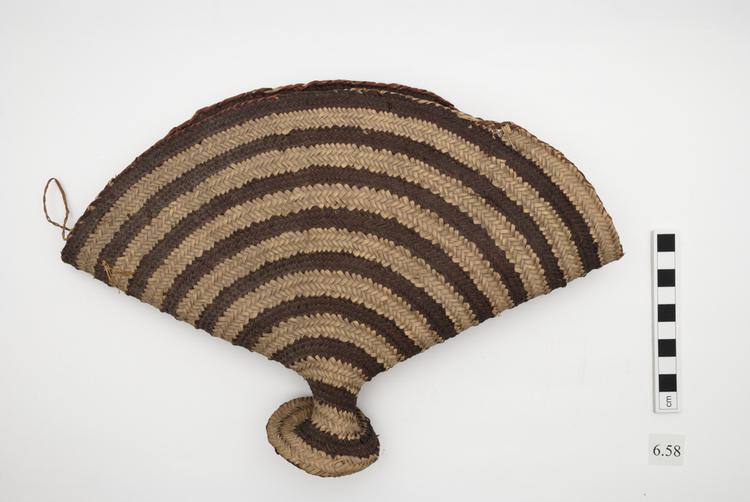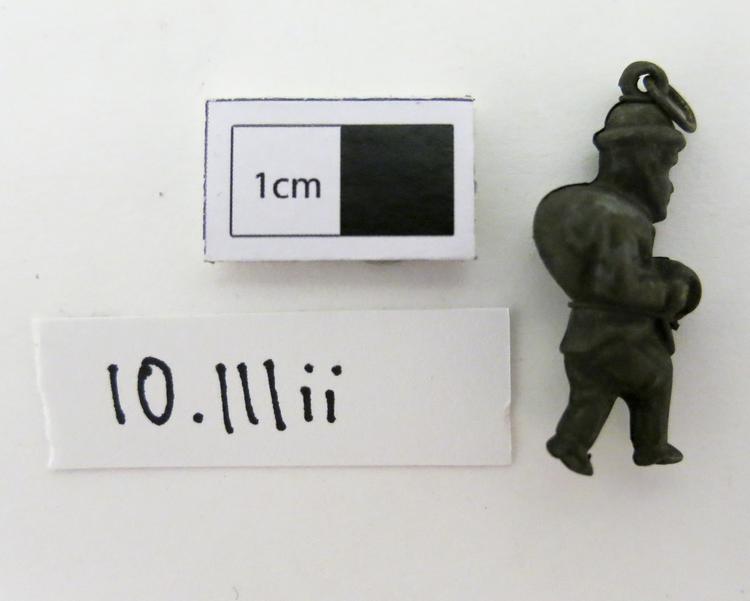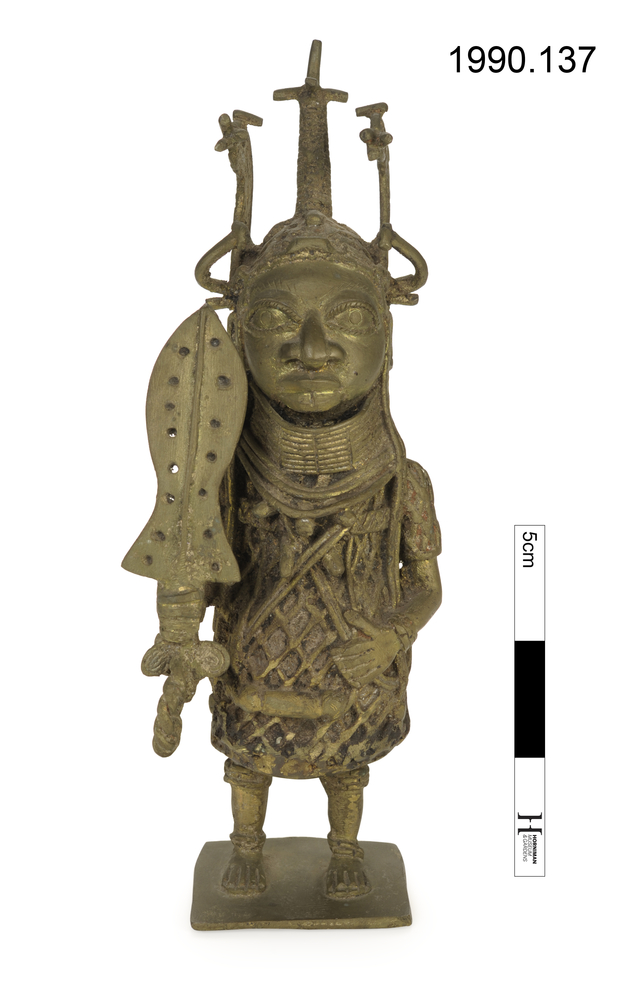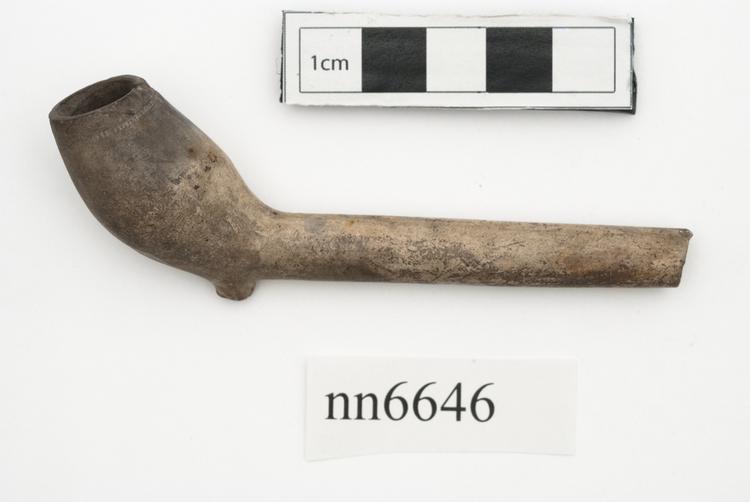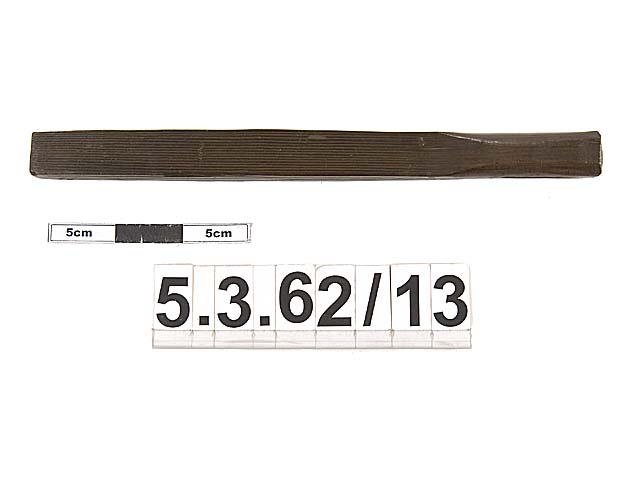
Barkcloth beater, a square section with each face scored with parallel lines, the width between them differing on each face. Label attached saying 'Mallet. Used in the preparation of native cloth made form the paper-mulberry tree'.
Barkcloth Beater, Ike, Rarotonga, Cook Islands. This short, club-like implement of the incredibly hard toa (Ironwood, Casuarina equisetifolia) is beater for the manufacture of barkcloth, the indigenous textile of Oceania. Barkcloth was traditionally also made in parts of Africa, South America and Southeast Asia, from a range of different trees. Oceanic barkcloth was generally made with the bark of the Paper Mulberry (Broussonetia papyfera) , which felts together easily and produces an even, durable white cloth with few imperfections. The small Paper Mulberry saplings are cut down at around the age of three years, and the bark is stripped from the sticks. Barkcloth is made only from the inner layer of the bark, and so the outer bark must be scraped off. The inner layer is rich in starchy fibres which fray and bind together easily, and the felting of these narrow strips into a continuous paper-like sheet is simply achieved by wetting the strips and beating their overlapped edges with a tool such as this on a flat wooden anvil until they fuse; rapidly, no join can be found, and in this way, larger and larger pieces of cloth can be made. Hardwood. Early 20th Century. Formerly in the collection of the London Missionary Society.



